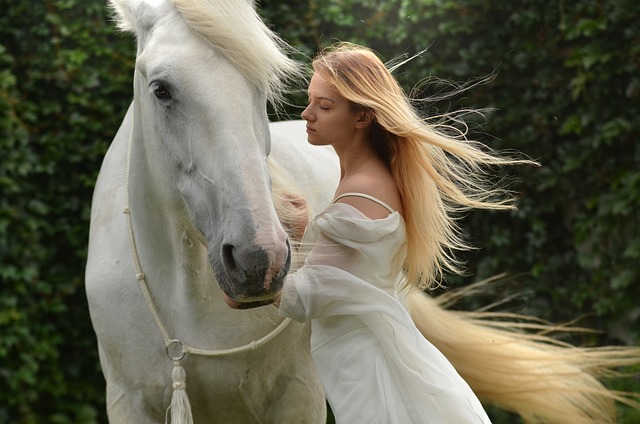Spis Treści
Who Rode the First Horse?
Throughout history, horses have played a significant role in human civilization. These majestic creatures have been our companions, transportation, and even partners in battle. But have you ever wondered who was the first person to ride a horse? In this article, we will delve into the origins of horse riding and explore the fascinating history behind it.
The Domestication of Horses
The domestication of horses is believed to have occurred around 4000 BCE in the Eurasian Steppe, a vast grassland stretching from Eastern Europe to Central Asia. This marked a pivotal moment in human history, as it revolutionized transportation, agriculture, and warfare.
Early humans initially hunted horses for their meat and hides. However, over time, they realized the potential of these animals as companions and work partners. The process of domestication involved capturing and taming wild horses, gradually breeding them for desirable traits, and training them for various purposes.
The Origins of Horse Riding
While the exact identity of the first person to ride a horse remains unknown, evidence suggests that horse riding emerged shortly after the domestication of these animals. The development of horse riding skills was likely a gradual process, starting with humans simply sitting on horses’ backs and eventually progressing to more advanced techniques.
It is important to note that early horse riding was likely bareback, without the use of saddles or stirrups. Riders would have relied on their balance and grip to stay on the horse’s back. Over time, humans began to experiment with different riding equipment, leading to the invention of saddles and other riding aids.
The Role of Horses in Ancient Civilizations
Horses played a crucial role in the development of ancient civilizations. Let’s explore how different cultures utilized these magnificent creatures:
Ancient Mesopotamia
- Ancient Mesopotamia, located in present-day Iraq, relied heavily on horses for transportation and warfare.
- The Mesopotamians were skilled charioteers, using horse-drawn chariots in battle.
- Horse riding was primarily reserved for the elite, such as kings and warriors.
Ancient Egypt
- In ancient Egypt, horses were highly valued and often associated with royalty and the divine.
- Pharaohs and nobles used horses for transportation and chariot racing.
- Horses were also used in religious ceremonies and as symbols of power.
Ancient Greece
- Horses held great significance in ancient Greek society, playing a central role in mythology and warfare.
- The Greeks were skilled horsemen and developed various equestrian sports, such as chariot racing and horseback riding.
- Ancient Greek cavalry played a crucial role in battles, providing mobility and firepower.
Ancient China
- Horses were highly valued in ancient China and played a vital role in warfare and trade.
- The Chinese developed advanced cavalry units and were among the first to use stirrups, enhancing their riding skills and combat effectiveness.
- Horses were also used for transportation, agriculture, and cultural ceremonies.
The Evolution of Horse Riding Techniques
As humans became more adept at horse riding, various techniques and styles of riding emerged. Let’s explore some of the notable riding styles throughout history:
Classical Riding
Classical riding refers to the traditional style of horse riding that originated in ancient Greece and Rome. It emphasizes harmony between horse and rider, focusing on balance, flexibility, and communication.
Key features of classical riding include:
- Correct posture and alignment
- Lightness in the rider’s aids
- Subtle communication through the use of reins, seat, and legs
Western Riding
Western riding evolved in the United States during the 19th century and is closely associated with cowboy culture. It is characterized by a deep-seated saddle, long stirrups, and one-handed rein control.
Key features of western riding include:
- Strong emphasis on working with cattle
- Use of specific maneuvers, such as reining and cutting
- Distinctive attire, including cowboy hats and boots
English Riding
English riding originated in Europe and is widely practiced in disciplines such as dressage, show jumping, and eventing. It is characterized by a forward seat, shorter stirrups, and two-handed rein control.
Key features of English riding include:
- Focus on precision, elegance, and control
- Use of specific riding techniques, such as collection and extension
- Various specialized saddles, such as dressage saddles and jumping saddles
The Legacy of Horse Riding
Horse riding has left an indelible mark on human history and continues to be a beloved activity worldwide. Here are some of the enduring legacies of horse riding:
Sport and Recreation
Horse riding has evolved into a popular sport and recreational activity. Equestrian sports, such as show jumping, dressage, and polo, attract participants and spectators from around the globe. Riding for leisure and pleasure remains a cherished pastime for many.
Transportation and Agriculture
Although horses are no longer the primary mode of transportation, they still play a role in certain areas. In some rural communities, horses are used for agricultural work, such as herding livestock or plowing fields. Additionally, horses are utilized in search and rescue operations and mounted police units.
Therapeutic Benefits
Horse riding has therapeutic benefits and is often used as a form of therapy for individuals with physical, cognitive, or emotional challenges. Equine-assisted therapy can help improve balance, coordination, confidence, and overall well-being.
Cultural Significance
Horses hold immense cultural significance in various societies. They are celebrated in art, literature, and folklore, symbolizing strength, freedom, and nobility. Festivals and events centered around horses, such as the Kentucky Derby and the Spanish Riding School performances, showcase their enduring cultural importance.
Conclusion
While the identity of the first person to ride a horse remains a mystery, the origins of horse riding can be traced back to the domestication of these magnificent creatures



















